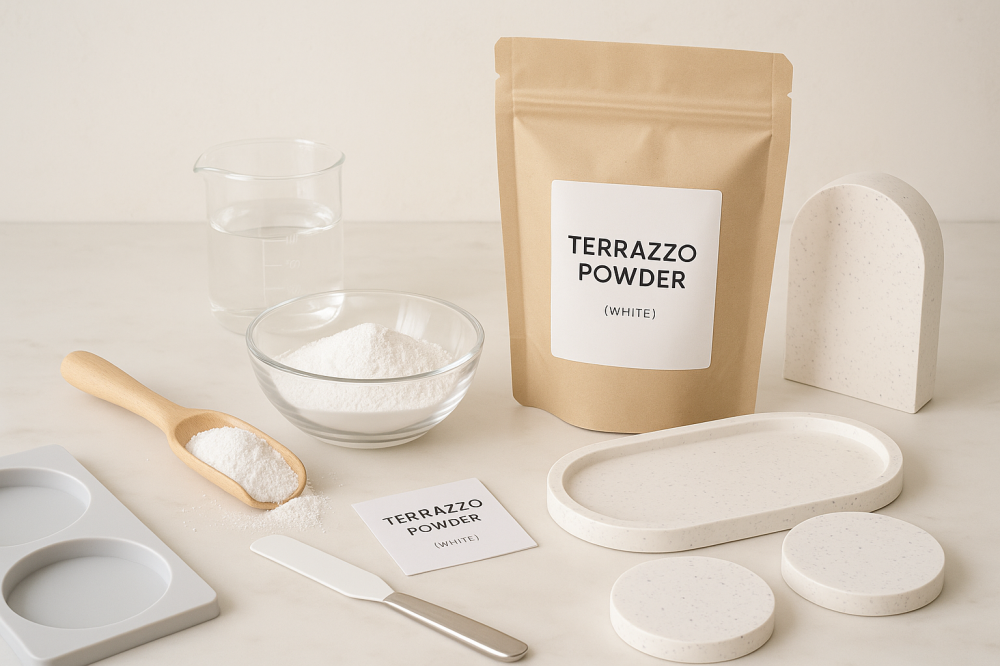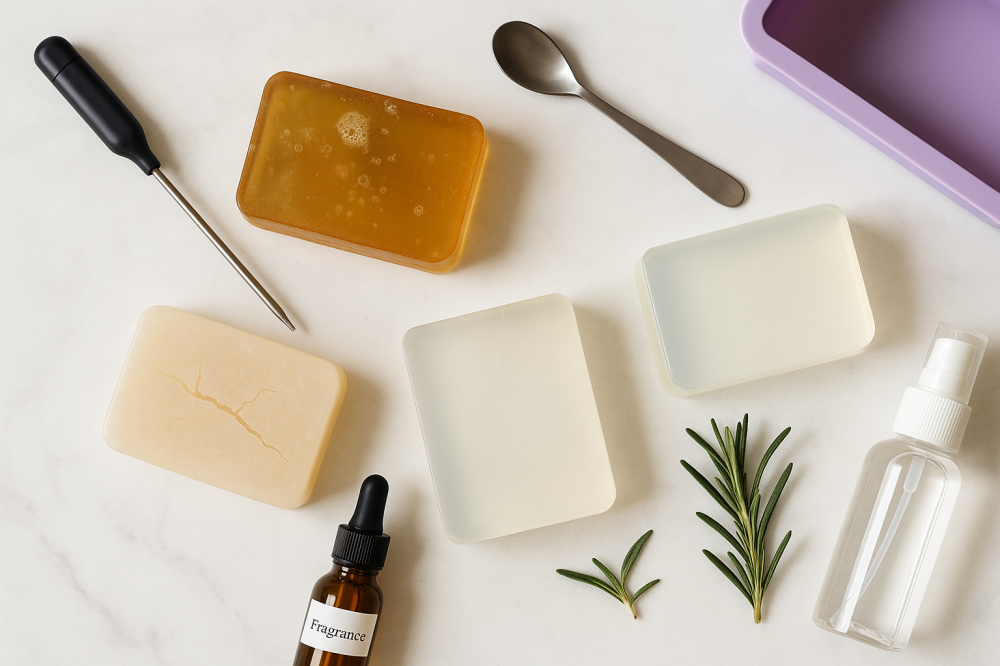This guide is for beginners who want clear, glossy glycerin soap without cloudiness. We'll break it down into three points: choosing the right fragrance , choosing the right color , and then practical steps to maintain its clarity .
First: Choosing the right fragrance for transparency
- Perfumes specifically for soap : Use essential oils that are safe for the skin and specifically formulated for melt-and-pour soap.
- Addition percentage : Generally, stick to 1–2% of the base weight. Excessive fragrance may cause cloudiness or excessive softness.
- The effect of vanillin : Some fragrances (vanilla, caramel, cookies) contain vanillin, which can cause yellowing or browning over time. If you want the item to remain transparent and not yellowed :
- Choose perfumes that are vanillin-free or low in vanillin.
- Or use a vanilla-based soap stabilizer (if available), with a small test first.
- Scents that complement transparency : Lighter notes are usually the most visually appealing with transparent soaps, such as: citrus, marine scents, cucumber, green tea, light lavender, refreshing herbs.
- Temperature when adding : Add the fragrance when the base has cooled to about 55–60°C with gentle stirring ; this reduces bubbles and keeps the base clear.
Second: Choosing the appropriate color for transparency
- Transparent liquid dyes for soap : These are the best option for a clear, transparent result. Add the color drop by drop until you reach the desired level (start, for example, with 1–3 drops per 100 grams as a test).
- Glitter powders (mica) : They give a beautiful shine, but they are solid particles ; too much will make the piece almost opaque. If you want transparency:
- Use a very small amount for a slight flash, and stir gently to avoid settling.
- Or reserve the mica for the top layers only and leave the rest of the piece without powders.
- Opaque or “creamy” colors : These are intentional formulations to obscure vision; avoid them if your goal is transparency.
- Correcting a slight yellowing : If a slight yellow tinge appears from the perfume, a tiny blue dot of transparent dye can even out the tone and restore clarity (test on a small amount first).
- Avoid colorings not intended for soap : food coloring, acrylic paints, or inks will not give you proper consistency or clarity and may cloud the base.
Third: Practical steps to maintain transparency
- Gentle melting without boiling : Melt the base between 60–75°C in a water bath or by intermittent heating in the microwave.
- Additions at a suitable temperature : Add perfume and color at 55–60°C with gentle stirring so as not to introduce air.
- Minimalism is the secret : the transparent base remains transparent when the color is light and the fragrance is within 1–2% .
- Prevent bubbles : Pour from a low height and slowly, then immediately spray the pouring surface with 70% medical alcohol to burst microbubbles.
- Do not add water or milk : additional liquids cloud the base and increase the likelihood of sweating.
- Avoid solid additives : herbs, clay, and natural petals reduce transparency; use a safe synthetic alternative or apply them only in a thin layer if needed.
- Stable cooling : Leave the pieces to cool in an air-conditioned, dry room away from direct fans and sudden temperature changes.
- Quick packaging : After hardening, wrap immediately (heat shrink or airtight cellophane) to protect against atmospheric moisture that causes “sweating”.
- Small test before bulk production : Try a small-scale recipe for each fragrance/color to see how the transparency behaves before producing a large batch.
Common mistakes that cause you to lose transparency (and their solutions)
- Excessive or non-soap-specific color → Use a transparent dye specifically designed for soap and in very small quantities.
- Perfume with a high percentage or rich in vanillin → reduce it to 1–2% or replace it with a low/vanillin-free perfume.
- High pouring temperature and vigorous stirring → Cool to 55–60°C, stir gently and pour from close range with a spray of rubbing alcohol.
- Solid additives within the base → avoid them or use them in a thin surface layer only.
Summary
To maintain the transparency of glycerin soap :
Choose a 1–2% fragrance specifically formulated for soap, preferably vanillin-free , and use transparent liquid dyes in small doses. Control the heat, stir gently, spray with alcohol to remove bubbles, and cool and seal quickly. With this simple recipe, you'll have clear, glossy, and beautifully scented bars ready for display and sale.




